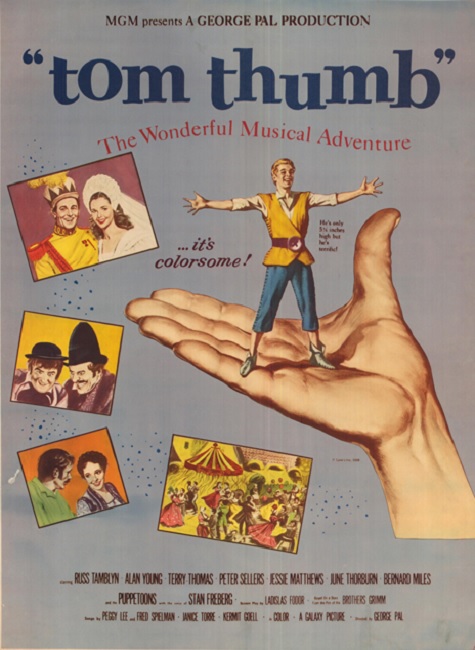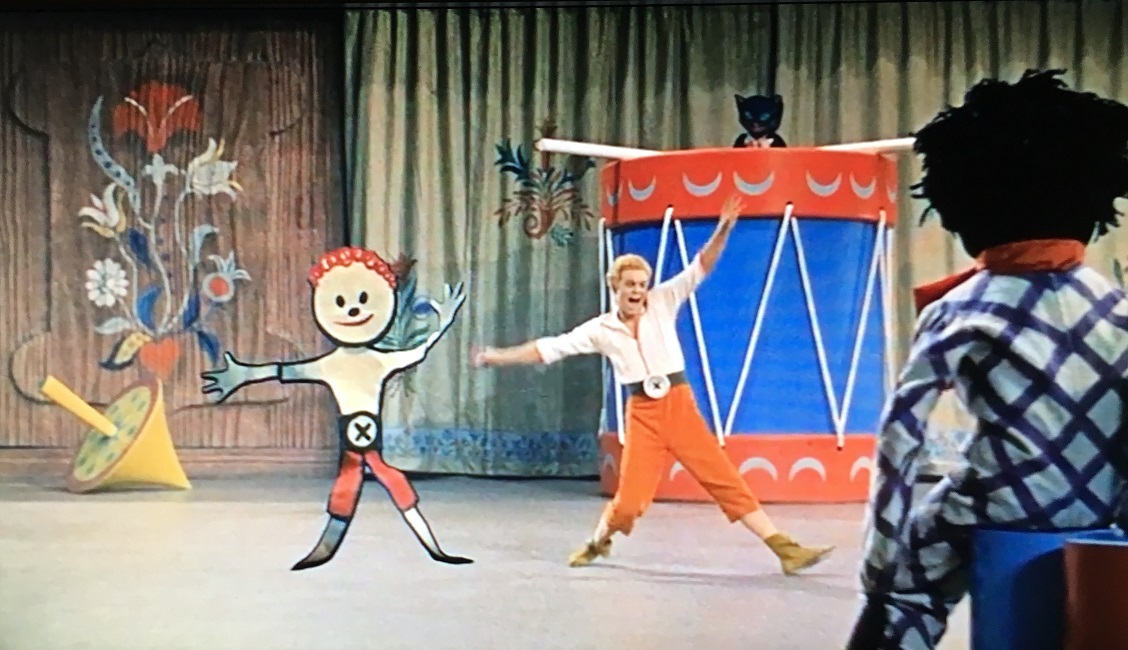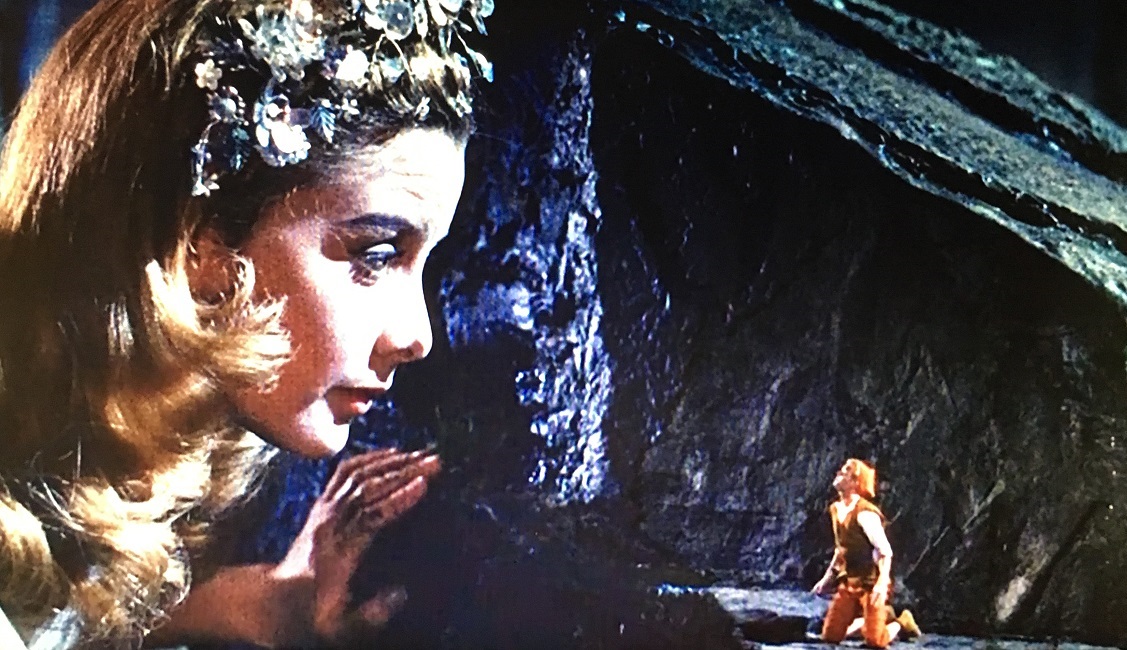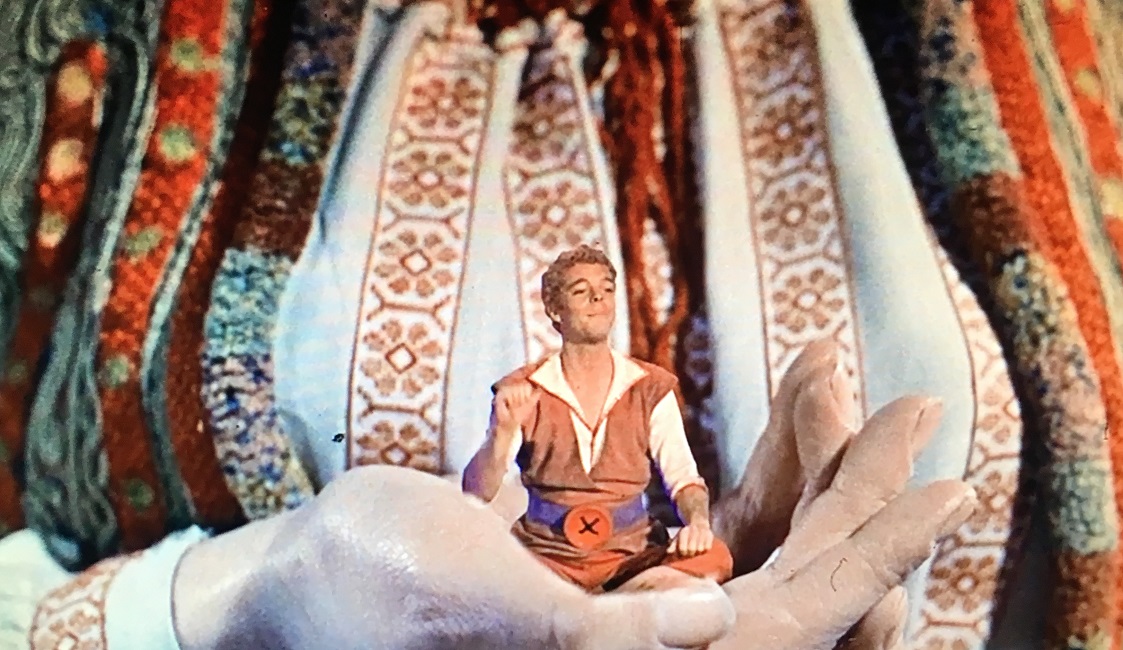



Tom Thumb – 1958 (WINNER)
 There is a lot to say about this Special Effects Oscar winner. What they got right, they got very right. But unfortunately, what they got wrong, they got very wrong. It’s a good thing I’m only commenting on the special effects and not the film as a whole. This was a ridiculous movie, and not always in a good way. It seemed that its target audience was five years old and under. There were a lot of bright colors and fanciful, forced merriment. This movie was so wholesome that it made Walt Disney look like Andrew Dice Clay.
There is a lot to say about this Special Effects Oscar winner. What they got right, they got very right. But unfortunately, what they got wrong, they got very wrong. It’s a good thing I’m only commenting on the special effects and not the film as a whole. This was a ridiculous movie, and not always in a good way. It seemed that its target audience was five years old and under. There were a lot of bright colors and fanciful, forced merriment. This movie was so wholesome that it made Walt Disney look like Andrew Dice Clay.
But that meant that the visual effects artists were able to take their imaginations in light-hearted and fanciful directions. Probably the most impressive of the film’s effects was a ten minute dance sequence in which Tom Thumb, played by Russ Tamblyn, cavorts with a host of animated toys. Most notably, he danced with a paper doll, who matched him move for move. That was pretty impressive, except when parts of the paper doll turned sideways. The thin paper actually disappeared in the stop-motion animation process.
There were plenty of enlarged sets and props that were often used to give Tom the illusion of smallness. At one point Tom rides in the ear of a horse. There were the moving toys that were sometimes stop-motion animation against a blue-screen, and were sometimes life-sized people in toy costumes. There was a fun little sequence in which several pairs of magical shoes danced all by themselves, again, using that stop-motion animation. These effects were all very well-executed and fun to watch. There was even a shot near the end which borrowed a trick from the 1940 Best Special Effects winner, The Thief of Bagdad. They had Tom sitting in the palm of a giant hand. They could have blue screened this shot, but instead, they built a massive hand. At least they had the sense to make sure it didn’t move.
But the movie’s bad effects were simply terrible. For example, one of the worst things they did was, during many of the wide shots, Tom changed from a live actor to a tiny doll that looked like simple painted wood. The doll never moved, even when picked up. It just looked incredibly fake. Another failing was the blue-screening. There was often the tell-tale black outline around things that had to be tiny. And lest I forget, there was a regular filmed background that changed to a painted backdrop that looked like it belonged in a children’s stage production.
But this was the 1958 winner. I guess that, for the Academy voters, the good outweighed the bad. Either that, or they were just drawn in by the refreshing burst of childish whimsy and magic that was a far cry from the common special effects nominees like war films or dramas. The movie’s effects were fun, but I think they would have been even more fun if I was four years old.